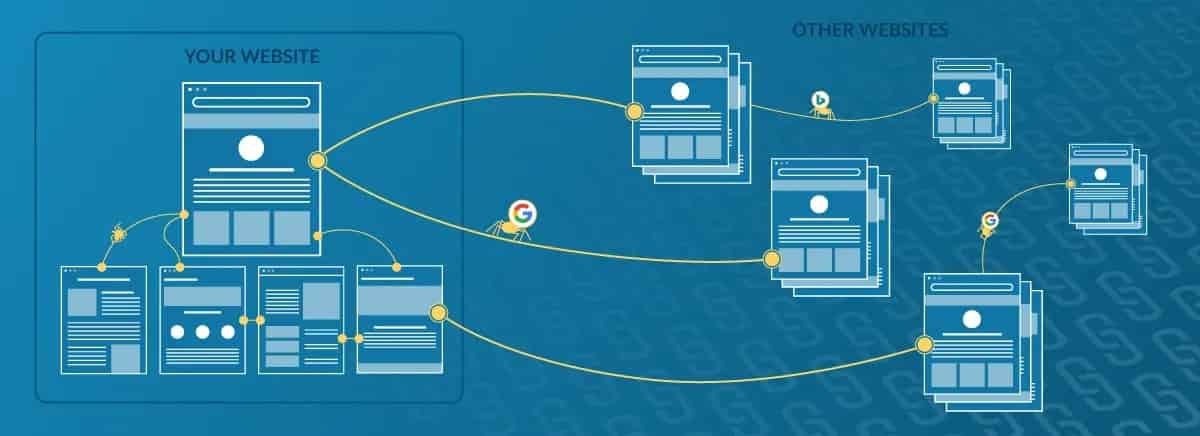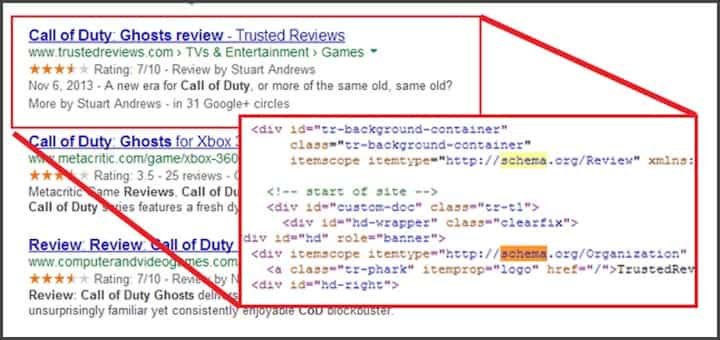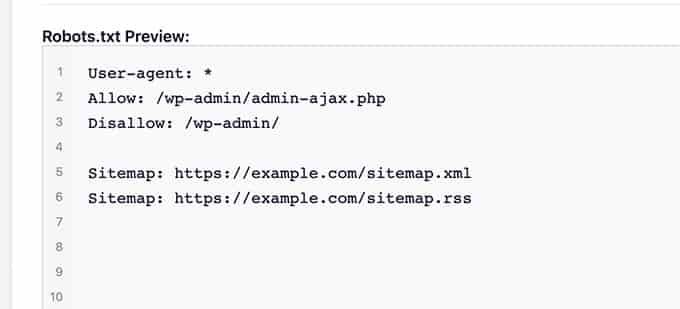If you want to improve your ranking and your SEO efforts in 2023, follow these 12 SEO techniques to boost organic traffic and rankings.
- Keyword research and optimization
- On-page optimisation (title tags, Meta descriptions, header tags, etc.)
- Content creation and optimization
- Link building and backlinking
- Technical SEO (website speed, mobile responsiveness, crawlability, etc.)
- Local SEO (Google My Business, local citations, etc.)
- Image enhancement (compression, alt tags, file names, and so on)
- Social media optimization
- Schema markup
- User experience (UX) optimisation
- Sitemap and robots.txt file optimization
- Analyze and monitor website data (traffic, rankings, conversions, and so on).
1. Keyword research and Optimization

The main objectives of keyword research and optimization are to increase your website’s visibility in search results and attract relevant traffic.
Finding potential keywords to target is the first step in keyword research. One of the most powerful tools is the Google Keyword Planner, which identifies keywords and phrases that are relevant to your industry and have a high search volume.
You can find ways to use keywords that are similar to those that your competitors are using by looking at their websites.
After discovering potential keywords, the next step is to make sure that the content on your website uses those keywords. and use those keywords in the content of your website, like blog posts, product descriptions, and other pages.
When optimizing the content of your website for keywords, it is important to keep the content high-quality, relevant, and interesting, and to make sure that the keywords are used in a natural way.
Keyword research and optimization are important parts of SEO. They can help your site show up higher in search results, get more relevant traffic, boost your site’s authority, make the user experience better, and sell more.
2. On-page optimization (title tags, meta descriptions, header tags, etc.)

On-page optimization is the process of changing your website’s content and HTML code to make it more relevant and trustworthy.
On-page optimization is optimizing your title tags and meta descriptions. Title tags and meta descriptions appear in search results and give users a brief overview of what your page is about.
Make sure that your title tags and meta descriptions are well-written, match the content of your page, and include your target keywords.
Optimizing your header tags, such as H1, H2, and H3 tags, they help to structure the content on your page and make it easier for search engines to understand the content of your page.
Make sure they are used in a logical and hierarchical way and that they show how your content is organized.
3. Content creation and Optimization

Content creation is the process of creating high-quality, relevant, and engaging content to attract more traffic and improve your website’s visibility in search results. The goal of creating and optimizing content is to give users something of value and make your website a reliable source of information in your industry.
The first step in content creation is to determine what type of content to create. This may include blog posts, product descriptions, infographics, videos, and other forms of content that are relevant to your target audience and industry.
When determining what type of content to create, it is important to consider what your target audience is searching for and what type of content will best meet their needs.
after creation of content, make sure it is high-quality, relevant, and interesting, your content should be well-written, accurate, easy to understant and provide value to users.
Also, the keywords in your content, including your target keywords, should be optimized in a natural way.
Another important part of content creation and optimization is to regularly update your website with fresh content. This helps to keep your website relevant and up-to-date, and it can also help attract new visitors and improve your website’s visibility in search results.
It is also important to optimize your content for search engines. This contains optimizing on-page elements, such as your title tags, meta descriptions, and header tags, to include your target keywords and provide a clear and concise summary of your content.
By keeping track of how well your content does, you can find places where it could be better and make changes to your content and optimization strategies to get more visitors and sales on your site.
By adding new content to your website on a regular basis and optimizing that content for keywords and other on-page elements, you can make your website a reliable source of information in your industry. This will bring more people to your site and help you make more sales.
4. Link building and backlinking:

Link building is an important part of SEO that helps to improve your website’s visibility, authority, and traffic. Link building involves getting links from other websites to your own site, while backlinking involves linking from your own site to other relevant and authoritative sites.
Link building is one of the most important things search engines look at to figure out how important and authoritative a website is. The more high-quality, relevant links that point to a website, the higher its visibility in search results, and the more likely it is to attract new visitors.
There are many different strategies for link building, including guest blogging, broken link building, and outreach to other websites and influencers in your industry.
Backlinking is also important for improving your website’s visibility and authority. When you link from your own site to other relevant and authoritative sites, you are demonstrating to search engines that you are providing value to users and that your website is a trusted source of information.
Backlinking also helps drive traffic from other relevant and authoritative sites, which can help your website show up higher in search results and get more visitors.
However, it is important to note that not all links are equal. The authority of the linking site, the relevance of the linking site, and the relevance and context of the link itself are just a few of the variables that affect a link’s quality.
So, it’s important to focus on getting high-quality, relevant links from authoritative, trustworthy sites and to avoid any link-building strategies that search engines might see as manipulative or spammy.
Focus on building a diverse and natural link profile and aim to obtain links from a variety of different types of sites, including websites in your industry, blogs, forums, and social media sites.
Also, it’s important to make sure that your link profile is natural and that none of your links were made or gotten through link schemes or other ways to trick search engines.
By keeping track of your link building and backlinking strategies, you can find places to improve and make changes to your link building and backlinking strategies to bring in more traffic and make your website more visible and authoritative in search results.
5. Technical SEO (website speed, mobile responsiveness, crawlability, etc.)

Technical SEO is another important part of optimizing your website for search engines and improving its users’ experience, visibility, and overall performance.
Technical SEO means making changes to your website’s technical parts, like its speed, how well it works on mobile devices, how easy it is to crawl, and other things, to make it more visible to search engines and give users a better experience.
Website Speed:
Websites that take a long time to load can hurt both the user experience and the site’s visibility in search engines.To speed up your website, you should reduce the size of your files, optimize your images, and use a fast and reliable web host.
You can also use tools such as Google PageSpeed Insights and GTmetrix to measure your website’s speed and identify areas for improvement.
Responsiveness:
Mobile responsiveness is another important part of technical SEO becuase as more and more people use mobile devices to access the web, use a mobile-friendly design and test it on a variety of devices with different screen sizes.
You can also check how mobile-friendly your site is with tools like Google’s Mobile-Friendly Test.
Crawlability:
What is meant by “crawlability” is how easy it is for search engines to crawl and index the pages on your website is what is meant by “crawlability. “Improving crawlability involves making changes to your website’s structure and code to make it easier for search engines to crawl and index your pages.
Site’s structure should be clear and easy to understand, using XML sitemaps, and adding your site to Google Search Console.
There are also security, website architecture, and the use of structured data. By taking care of these and other technical SEO factors, you can improve your website’s performance and visibility in search results and get more visitors who are interested in what you have to offer.
Technical SEO is an ongoing process, and stay up-to-date with best practices and changes in search engine algorithms.
By focusing on things like website speed, mobile responsiveness, crawlability, and other technical aspects, you can improve your website’s visibility in search engines, improve the user experience, and get more relevant and interested visitors.
6. Local SEO (Google My Business, local citations, etc.)

Local SEO is an important part of search engine optimization that focuses on making your website rank well in local search results. This is important for local businesses that want to show up in local search results for relevant keywords and phrases.
Setting up a Google My Business profile is an important part of local SEO. Google My Business is a free tool that allows businesses to manage their online presence across Google, including search and maps.
By creating a Google My Business profile, businesses can provide accurate and up-to-date information about their business, such as their address, phone number, and business hours, which can help improve their visibility in local search results.
Local SEO involves acquiring local citations. Local citations are mentions of your business’s name, address, and phone number (NAP) on other websites. These citations help establish your business’s presence in your local area and can improve your visibility in local search results.
To get local citations, list your business in relevant directories and databases, like local business directories, Chamber of Commerce websites, and industry-specific directories.
It is also important to optimize your website for local keywords and phrases by focusing on keywords and phrases that are relevant to your business and location and using them in the content and meta tags of your website. This can help make your website more visible in local search results and bring more people who are interested in what you have to offer to your site.
7. Image optimization (compression, alt tags, file names, etc.)

Image optimization compresses images.
Large images that aren’t optimized can slow down the speed at which your website loads, which can hurt your search engine rankings and the user experience.
By compressing images, you can reduce their file size while keeping their quality. This can help your website run faster and rank higher in search engines.
Another important part of image optimization is using descriptive file names. Search engines use image file names to understand what an image is about, so it is important to choose descriptive file names that accurately reflect the content of the image. This can help search engines better understand the content of your images and improve their visibility in search results.
Alt Tags:
Alt tags are also an important part of image optimization. Alt tags provide a text description of an image for users who are unable to view the image, such as users with visual impairments or those using screen readers.
Alt tags can also help search engines understand the content of an image and improve its visibility in search results. When writing alt tags, it’s important to choose tags that are clear and accurate about what the image is about.
By compressing images, giving them descriptive file names, and using alt tags, you can help search engines understand what your images are about and get more relevant traffic to your site.
8. Social media optimization

Social media optimization is the process of using social media platforms to promote your website and raise its visibility and authority. Social media sites like Facebook, Twitter, and Instagram have a large number of active users. This makes them a great way to promote your website and bring more people to it.
One of the most important parts of social media optimization is making and sharing high-quality, relevant, and interesting content.This can include blog posts, infographics, videos, and other types of content that provide value to your target audience and help promote your website.
When sharing content on social media, it is important to choose platforms that are most relevant to your target audience and to optimize your content for those platforms.
Social media optimization involves engaging with your followers. This includes responding to comments and messages, commenting on other users’ posts, and sharing other users’ content. Engaging with your followers can help build a strong and loyal following, increase your visibility on social media, and improve your website’s authority.
it’s the process of getting people to visit your website through social media sites such as Facebook and Twitter. Paid advertising can be a good way to reach a large and relevant audience and bring more people to your website.
By optimizing your social media presence and keeping up with best practices on a regular basis, you can make sure that your website always gives users a good experience and does well in search results.
9. Schema markup

A type of code called schema markup is used to give search engines a better understanding of the content on a website. You can give search engines more information about your site’s content, such as the type of content on your site, who created the content, when it was created, and other relevant information.
By providing search engines with more detailed and useful information, your website is more likely to show up at the top of search results, get more clicks, and get more relevant traffic.
Schema markup can also help search engines show rich snippets in search results. Rich snippets are extra pieces of information that show up in search results, like a product’s star rating, the ingredients for a recipe, or an event’s time and date. Rich snippets can enhance the user experience and boost the number of people who click through to your website from search results.
There are several types of schema markup that you can use, including structured data for products, recipes, events, and other types of content. It’s important to choose the type of schema markup that fits your content best and to use it correctly, since the wrong use of schema markup can hurt how visible your website is in search results.
10. User experience (UX) optimization

User experience (UX) optimization is the process of making changes to a website in order to enhance the overall user experience.
Making it simpler for users to navigate a website, interact with it, and complete desired actions, such as making a purchase or filling out a form, is the main purpose of user experience (UX) optimization.
The importance of a good user experience cannot be overstated. For one, it can help reduce bounce rates, or the percentage of users who leave a site after only visiting one page.
Positive user experiences encourage visitors to stick around and browse more pages, which can increase engagement and boost conversion rates.
Improved search engine visibility can also be a result of a good user experience. High-engagement and low bounce-rate websites are given more weight in search results by search engines like Google. Your website can rank higher in search results and get more organic traffic by improving the user experience.
There are several key elements to UX optimization, including:
- Site navigation: making it easy for users to find the information they need by organizing content into clear categories and using intuitive navigation menus.
- Site speed: ensuring that your site loads quickly will reduce wait times and keep users engaged.
- Responsive design is the process of making sure your site is optimized for different screen sizes and devices so that all users have a good experience.
- Content optimization: Using clear headings, subheadings, and bullet points to make your content easy to read and understand
- Call-to-action placement: Make sure that your call-to-actions (such as “buy now” buttons) are prominently placed and easy for users to find.
By regularly reviewing and updating your UX optimization strategies, you can make sure that your site always works well and gives users a good experience.
11. Sitemap and robots.txt file optimization

Sitemap and robots.txt file optimization are important components of technical SEO that help search engines understand and index your website.
A sitemap is a file that lists all the pages on your website and provides information about the structure of your site. To restrict which pages on your website search engines can crawl, use a robots.txt file.
With an up-to-date sitemap and a well-configured robots.txt file, your website will show up much more often in search results.
The robots.txt file enables you to exclude pages that you do not want search engines to index, while the sitemap helps search engines quickly and easily discover all of your website’s pages.

To optimize your sitemap and robots.txt file, there are a few key steps you can take:
- Create a sitemap: Use a sitemap generator to create a sitemap for your website. Make sure the sitemap lists all of your website’s pages and is updated regularly as you add or remove pages.
- Submit your sitemap to search engines: Once you have created your sitemap, submit it to search engines such as Google and Bing. This will help them understand the structure of your website and improve its visibility in search results.
- Use the robots.txt file wisely. Use the robots.txt file to exclude pages that you don’t want search engines to index, such as administrative pages or pages with sensitive information. Be sure to only exclude pages that are not important for your users or for search engines to see.
- Regularly update your sitemap and robots.txt file: Make sure to regularly update your sitemap and robots.txt file as you add or remove pages from your website. This will help ensure that search engines have the most up-to-date information about your site.
Your website will appear in search results a lot more frequently if you optimize your sitemap and robots.txt file. By giving search engines accurate and up-to-date information about your site’s structure and content, you can help improve your site’s ranking and get more organic traffic.
To ensure that your sitemap and robots.txt file are configured properly and giving your website the best results possible, check and update them frequently.
12. Analyze and track website data (traffic, rankings, conversions, etc.)

Website data analysis and tracking are important for SEO, as they help identify how well your website is performing and where improvements can be made.
You can gain a better understanding of how your audience is using your website and how well it is performing by regularly tracking crucial metrics like website traffic, rankings, conversions, and other crucial data points.
Website Traffic:
One of the most important metrics to track is website traffic. This includes the number of visitors to your site, the source of that traffic, and the behavior of those visitors once they land on your site.
Understanding your website’s traffic can help you identify areas of strength and weakness and can inform future optimization efforts.
Ranking:
Another important metric to track is ranking. This includes where your website ranks in search results for specific keywords and phrases and how those rankings have changed over time.
Understanding your rankings can help you identify areas for improvement and can also help you determine the impact of any optimization efforts you have made.
Conversions:
Conversions are another important metric to track. This includes the number of visitors who complete a desired action on your site, such as making a purchase or filling out a form. Understanding your website’s conversion rate can help you identify areas for improvement and optimize your site to drive more conversions.
It is important to track other important metrics such as bounce rate, time on site, and pages per session. These metrics can give you important information about how people use your site and help you find places to improve.
A key part of any SEO strategy is to analyze and track your website’s data on a regular basis. By keeping an eye on key metrics and making decisions based on data, you can improve your site’s visibility, bring in more traffic, and get more people to convert.


